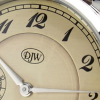My First Test Dial Printing...i'm Over The Moon!
-
Recently Browsing
- No registered users viewing this page.
-
Topics
-
Posts
-
By Neverenoughwatches · Posted
Naptha appears to be a general name and its content can be varied depending upon what it's specific use is. Lighter fluid as an example can be light or heavier also with other ingredients to help it burn. Try sesrching for benzine ( as opposed to benzene which is linked to causing health issues ) . There are other fluids such as ethanol that you could try and also methylated sprirts, mostly ethanol with a small percentage of methanol added. Experiment with any new chemical to see how quickly schellac dissolves in its presence. I have tried a few things but hexane is not one of them, i understand it does evaporate very quickly. Be sure sure to check out any safety data on chemicals you try. Toxicity of fumes and flash point information, ultrasonic machines can heat up fluids even without a heater function. And of course always ask here for personal opinions when trying a new substance. -
I have that set and really like it. I prefer that crystal holder over the one that came with my Bergeon claw tool and any time I use the claw I use this one instead of the Bergeon one, just an additional bonus with this tool.
-
Is the Roamer not a split stem? I'm confused on your how your case is put together. If it is a front loader where is it you are putting the case screws? I love me some Roamer, do you have any photos?
-
By ManSkirtBrew · Posted
Oh nice. I have a similar wedge style stump for my staking tool, so I'll give that a shot. Thanks! -
By joelcarvajal · Posted
Thank you all for the replies! Very informative! True enough, the Gamsol took some time to evaporate and does leave a residue. So not all naphtha are created equal! Need to find alternatives then. i was able to try Hexane recommended by Alex and it seems great. I wonder what the cons are?
-







Recommended Posts